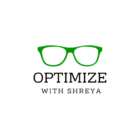
Every brand that wants to scale has implemented performance marketing campaigns at some point. Some may have seen success, some don’t but no one is ever satisfied. While there are many factors in a company’s growth – as a Performance Marketer, I believe we can do more and make our contribution significant.
The perspective I share purely comes from my understanding & the approach I try to follow – I hope it makes sense to you. Before diving into Performance Marketing, let’s first understand if Performance Marketing, Paid Marketing and Growth Marketing can be used interchangeably? In my opinion, NO.
Paid Marketing acts as an enabler to scale performance (reach, traffic, lead, sign-up, downloads etc.) over and above organic efforts through available channels. I categorize short-term or any paid activities focused on immediate results under this. There also is a misconception that ad spend is directly proportional to results. I would say, it really depends on a lot of factors.
On the other hand, Growth Marketing is responsible for company revenue & growth so the role often involves working in close collaboration with the product team along with the other marketing & non-marketing teams. Thriving on listening to customers is a must if one has ambitious business goals to achieve. An ideal fit for this role would combine skills in Marketing (online+offline), Product Marketing, Business Strategy & People Strategy.
Coming to Performance Marketing, it sits between paid and growth marketing where the core focus is on the action that is usually most important for a business i.e. conversion, purchase, bookings etc. through new customer acquisition & by strategically promoting products & services to them. It demands a holistic perspective of all customer touchpoints, product knowledge, and a deep understanding of the end-to-end customer related processes.
As cliched as it may sound, performance marketing is the art of reaching & sometimes being available for the right people, at the right time, and in the right place, combined with the science of delivering the right message and a seamless experience—one that feels natural, not like a push. It’s indeed a journey for the brand as much as it is for the customer (if one is looking for sustainable results).
Let’s understand the ideal responsibilities of a Performance Marketer regardless of one is on agency or brand side.
- The homework: Familiarize with the product, industry, competition and target audience.
- Know the basics: Seek foundational knowledge from superiors and cross-functional department heads. #1 will help ask better questions.
- Due diligence is non-negotiable: Time to apply or pick up analytical skills – dive into historical data, insights, audience behaviour, competitor analysis, set-ups, strategies & others. Go through the entire customer journey, understand team capabilities, workflows, and stakeholder contributions.
- Technical proficiency: Master key platforms while continuing to explore others as we learn more about our audience and where they engage the most.
- Collaboration with cross-functional teams: Ensure all teams involved in customer touchpoints (both online & offline) collaborate & stay aligned – some common ones are creative, brand, content, SEO, analytics, technology, UX, data science, sales and others
- KPI planning & strategy: By now a performance marketer has some relevant data and understanding on what to consider when working on a plan & strategy for a specific goal but not everything for a reason so let’s not ignore on having a contingency plan as well along with possible opportunities for test & learn.
- Systematic implementation: Implementation is the foundation of success or failure. Planning the set-up of each channel and ensuring alignment with the overall strategy is the key. This includes setting up with proper nomenclature, tracking, and other such essential elements.
- Monitoring & governance: This goes beyond just discussing the frequency of excel reports. Scheduling periodic meetings with cross-functional team to gather updates on ongoing items, track progress on any roadmap items assigned to them, documenting key discussions and action items are just a few pointers to get started. Staying informed about all touchpoint-related activities (both online & offline) is essential and again non-negotiable. Remember, everyone is working to support the same overarching goal directly or indirectly, making this collaboration a shared responsibility.
- Learning and growth: To stay ahead – focus on continuous experimentation, identifying new opportunities, staying informed about industry trends, and, most importantly, never stop listening to existing customers which also makes churn rate an important metric to gauge the true impact of performance marketing efforts & future strategy, planning & optimization.
Apart from technical know-how, a Performance Marketer should also not underestimate the power of patience and resilience—two soft skills that matter just as much as the commonly recognized ones.
Performance Marketing is a long-term game, driven by short-term goals/experiments and constant learnings. At every step, let’s ask oneself & the team if the experience we’re designing for potential customers would convince us to become one —and how quickly? The mix of yes and no is where the initial strategy lies, before the data takes over.
Do you know what I think is missing the most from this industry?
The Purpose. The Curiosity. The Impact.
Thank you for taking the time to read my blog. If you have insights, thoughts, or stories to share, feel free to reach out via the contact form or leave a comment below.
Stay motivated!
